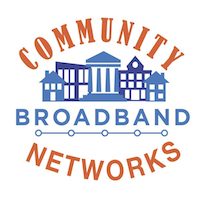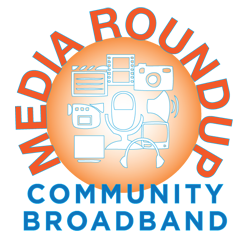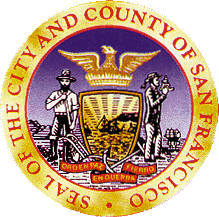Thanks to Jeff Hoel for providing the transcript for the episode 146 of the Community Broadband Bits podcast with Ted Deriso on the Mid-Atlantic Broadband Communications Corporation business in Virginia. Listen to this episode here.
00:05:
Tad Deriso: Yeah. It’s nice having what we call “coopitition.” Right? So, sometimes we’re customers. Sometimes we’re competitors. But 100 percent of the time, we’re enablers, to help the private sector. And that seems to prove out time and time again.
00:20:
Lisa Gonzalez: Welcome again to the Community Broadband Bits Podcast, from the Institute for Local Self-Reliance. This is Lisa Gonzalez.
Today, Chris visits with Tad Deriso, President and CEO of the Mid-Atlantic Broadband Communities Corporation, an open access network providing wholesale service in Virginia. The network has been instrumental in connecting community anchor institutions, government facilities, and local businesses. Tad offers some history on the organization’s business model, describes some of the challenges they’ve faced, and shares lessons learned. You can find out more about MBC’s network and their history at mbc-va.com .
Now, here are Chris and Tad.
01:02:
Chris Mitchell: Welcome to another edition of the Community Broadband Bits Podcast. I’m Chris Mitchell. And today I’m talking with Tad Deriso, the President and CEO of the Mid-Atlantic Broadband Communities Corporation. Welcome to the show.
01:17:
Tad Deriso: Thanks, Chris. Glad to be here.
01:19:
Chris: Well, let me ask you first, where do you operate? And then — not everyone knows what the mid-Atlantic is. And then, why don’t you tell us more about your organization, the MBC?
01:27:
Tad: Yeah. So, we’re a 501(c)(4) nonprofit organization. Own and operate a — kind of an advanced open access wholesale network in southern Virginia. So, basically, on the east coast of the U.S., we cover about 26 counties, where our network stretches probably 1600-1700 miles today — route-miles. And providing wholesale transport — exciting layer 1 services to carriers, ISPs, cable companies, all that good stuff. So, we’re in the wholesale business. And, as our day job, we’re, in essence, an economic development engine for our region of the state. Really using this network to promote our availability of advanced workforce, all the great things we have going on with data centers and other companies now. Looking to make those investments. And that’s — interestingly enough, an open access network is a key driver for that. So, we’re glad to see that vision coming to reality.
02:33:
Chris: And about how many providers do you have on the open access network?
02:36:
Tad: Yeah. We work with 45 companies today. That is everybody from Level 3, to Verizon Business — your big billion-dollar companies — all the way down to some regional providers like Lumos and Shentel. And even some small ISPs — basically, mom-and-pop wireless ISPs that do a great deal of service to really help extend that broadband to those areas that, you know, don’t have it — really have no options other than dial-up and satellite. And that’s becoming a big way to help encourage that in the region.
03:08:
Chris: Our listeners have heard an interview or two with Danville. But I want to make sure people have a real sense of — what is it like in southern Virginia, from an Internet access point of view?
03:19:
Tad: Pretty incredible, when you look at the numbers and access. So, Danville has a fabulous network — they built several years ago. And utilized the MBC network to tie into, you know, the major peering exchange, where they can access high-speed IP transit and all that good stuff. What’s really interesting, Chris, is the change of pricing, both on the capacity side and on the pricing side. ISPs that used to only have access for T1s or DS3s — and, again, those range from $1500 a month to $16,000 a month — to get their — basically, their connection to the outside world, now, because our network’s built, we’ve had operations for on-net at two of the largest peering exchanges on the east coast: Ashburn, Virginia, the Equinix facility; and Telex, down in Atlanta, 56 Marietta Street. That’s just provided a massive change in the economy of what is available, both on the pricing and the availability. So, just to give you an idea, price per megabit people can access at those Internet peering points for probably a dollar — two dollars — per megabit. And that’s on a gigabit level. And when you add the cost of transport in there, people are able to get, you know, full gigabit transport connections from four to six dollars per meg. And that really flips the economics model, when you talk about the enterprise customer in our region. What are they able to get out of that? And that’s really turning the tables on having those companies access providers with big pipes at a lower cost, and driving all kind of new products and services in the region. So, we’re really excited about that.
05:08:
Chris: You started off life as a coop. Can you tell us a little bit about the funding that allowed you to get started?
05:16:
Tad: Sure. When we first started, as a cooperative, we had some funding we applied for from the U.S. Department of Commerce Economic Development Administration. Again, this was — remember, back in 2003-2004 — it’d be even before BTOP was a dream [laughs] — in the Commerce Department, through a lot of political support here in Virginia, provided $6 million of matching funds to, in essence, extend an open access fiber backbone to the industrial parks in southern Virginia — about — I think it was around 350 miles for that first build. We had matching funds that we applied for, and were awarded, from the Virginia Tobacco Commission. And that’s basically a quasi-state entity that manages the proceeds from the tobacco settlement — master settlement agreement — back in the early 2000s. And they, you know, invest in economic development projects, and all different kind of things. So, that first $12 million was, in essence, the start of MBC. We formed ourselves in January of 2004. Grants came soon after that. And then started building the network.
06:25:
Chris: And then you ultimately decided to transform from being a coop into a different kind of nonprofit. What drove that change?
06:34:
Tad: Yeah. So, it’s a really interesting transformation in our business. Really, our mission has not changed. The passion of keeping our local communities — supporting our local communities — never changed. What was problematic, in the cooperative model where we had, was the fact that, in a coop, you have to do certain things to maintain that tax-exempt status, which was to have members of your cooperative on your board of directors. You needed to make sure that earnings — or, sometimes they call that “excess revenues” — those are applied as capital credits and paid back to your members — which is basically a dividend. Those two things were very problematic for us, because, although we had members on our board of directors, they were not members that actually used a service. They were not broadband providers. They were independent, you know, business people, economic development professionals, philanthropists, attorneys. And, basically, that gave us a really easy way to make sure that there was not a conflict of interest. If we were to have a small ISP, or a regional provider, or a billion-dollar telecom corporation on our board of directors, all of a sudden, people have access to things that some of their other competitors don’t. And that was extremely problematic from a governance perspective for us. So, we really didn’t have an interest in having telecom members on our board of directors.
And the other part of that was, dividends, when we actually started being very successful, and having a lot of revenue come in, and “excess earnings,” and found that — that’s fabulous. We keep reinvesting that in the business. But, as a coop, that money isn’t really yours. You have to pay that back to the members. And we would then be in violation of our grant agreements, if we were to write a check to our private-sector telecom providers. Which, our grants specifically say that we’re not allowed to inure benefit to any private-sector corporation, individually, as a result of the grant. So, working with our consultants at KPMG, and talking to the IRS, made the decision to transform from a (c)(12) into a 501(c)(4). Got that through, and retroactive status. And all things are great now. So —
08:52:
Chris: I can imagine that there was some frustration, where you’re sitting in the office thinking, you know what, I just want to figure out how to get more fiber to more businesses, more anchor institutions, and do this. I don’t want to be figuring out how to play around with tax laws, to make sure that I’m not, you know, violating any of these grant agreements, and this and that.
09:10:
Tad: Exactly. Exactly. Yeah, it’s very challenging. You know, we focus on doing our mission every day, and we have things thrown at us that, well, where did that come from? So — But, yeah, that’s all part of, you know, good governance, and transparency, and things we have to do to keep the organization moving. So —
09:27:
Chris: Right. So, one of the things that I was interested in — I mean, I’ve been following your work at MBC for a number of years — and I recognize that you guys have done a wonderful job at dealing with the middle mile problem, but I learned that you’re looking, in Martinsville, with some sort of partnerships, and other approaches, to try and help them solving more of the last mile problem. So, I’m wondering if you can tell us more about that.
09:51:
Tad: Ah, so it’s a really interesting scenario. We are a middle-mile network. But we do extend fiber to individual businesses, or schools, or, you know, cellular towers. So, in essence, we have that last-mile connection. The difference in our business model is, we do not serve those companies directly. Right? So, we don’t provide the retail service. Martinsville is really interesting because, just a few months ago, we had an announcement. A company based in the United Kingdom — a company called Hardide Coatings — decided to look at establishing a east coast presence — manufacturing facility. And did a lot of searching. And ended up in looking at Martinsville. One of their big concerns that they communicated to the locality was, they basically wanted to manage and control all of their processes and network facilities in Martinsville, Virginia, from their facility in the U.K. So they were concerned about, you know, this is not something you put on DSL, or cable modems, or, definitely, not a wireless network. Wanted to make sure that there was fiber, we could have direct access into their cloud provider, which is an international company. Worked with them, through some of our customers, and came up with a solution that worked. And they were just fascinated that — an MBC really doesn’t exist over in the U.K. But the fact that we could extend the fiber to their business. And then they can have their choice of 45 different providers. And it was not an issue of who owns the fiber, and how much they have to pay, and all these kind of things. We do that as an incentive. So we extended a fiber lateral at no cost to them. That basically gives them the on-ramp to our network. And they ended up, after some research, working with one of our customers to get a 100-megabit connection up to northern Virginia, which ties into their cloud provider.
So, those kind of things are really driving the bus, so to speak, when it comes to economic development. And as a growth to that, we looked at Martinsville, really, as a unique ecosystem. It’s still a very difficult place economically, in the Commonwealth of Virginia. I think the unemployment rate is still around 10 percent. State is around, I think, four and a half to five percent. So it just gives you some indication of that. So we’re playing around with an idea to say, hey, what would happen if we had an open access fiber connection at every single business? And hope the — also address the residential side, which we’ve traditionally NOT done — through partners and other companies we’re working with that DO have an interest in that. Would it make sense that we could facilitate some type of project, and see what happens?
So, those are some of the initiatives we’re working on, and — in Martinsville — to see, you know, what happens if you can get everybody connected, and then allow that, you know, service to come on board and do some unique and creative things.
12:52:
Chris: It’s one thing to say, you know, yeah, we’d like to have a connection to every house and business. But, typically, the capital costs of building that are so prohibitive that it doesn’t happen. And so I’m curious if there’s anything that you can share with us as to, you know, how you can lower the costs enough to make it happen.
13:13:
Tad: The really interesting part is, there is some density within the city of Martinsville and Henry County, so you do have some — you know, some stretches where you may only have, you know, one or two homes every mile. But, in a preponderance of where things are — and especially in the business parks — you do have quite a bit of density that can make things happen. So, this group that we’re talking with has some unique construction methods, to be able to do some things. And we’re anxious to see about putting that into the place, and see how that works. So, yeah, that’s always the challenge. Right? The capital cost — to get it built. And then, really, long-term, is, well, what’s the operational cost to keep the stuff running that you just built? And that is, really, something that a lot of people forget to look at when they are building networks. You know, a lot of times, getting money’s easy. It’s the recurring money that’s a little tougher. Even in our perspective, with our mission, it’s easy enough for us to come in there and — you know, we’re managing a very, very large network. And then, to manage a network that has a bunch of connections to businesses and homes, and working with our local partners, the city of Martinsville, there, you know, is a way to keep the ball rolling, and hopefully make it make sense.
14:35:
Chris: One of the things that I suspect you have going for you is that, because of your actions and the city of Martinsville and Henry County, every community anchor is already connected to the publicly-owned — or else the MBC-owned — middle-mile open access network. And so you have revenues from all the anchor institutions that are now being able to, ultimately, not just pay for the existing network but, then, to be reinvested in expanding the network. And I’m curious if you can speak to how important it is to be able to take the anchor institution revenue, and to be able to reinvest that.
15:13:
Tad: Yeah. Very critical. You know, the interesting thing about the city of Martinsville is, we actually don’t have our own fiber to every school in the city. The city of Martinsville has their own fiber network, called Mynet — basically a smaller version of what Danville has done. And that’s been a great resource for the city to do all that. Where we come into play, is, we basically connect the city to the outside world, and have revenue from that. So, it’s a nice little partnership. We’ve done builds with the city, where they own half the fiber, we own half the fiber. Do some unique things with pole attachments. And the ability to — where its community anchors or businesses or cell towers in a region — be able to kind of gather up that revenue and reinvest it in new projects, or continuing to pay for your existing projects. Really important type of things. And we’ve — because we’re — our scope is so large, with 26 counties — I was really able — enabled us to do some creative things with those “excess earnings” and “excess revenues” that we have. Because, as you know, as a nonprofit, we don’t have shareholders, we don’t have owners. We basically plow every penny we make back into the network, back into marketing our region for economic development. You know, we’re starting to see some good things happen in Martinsville for that.
16:33:
Chris: Well, let me ask you, as a final question, you know, you built your network with sort of one-time monies. And you’ve obviously done a tremendous job of turning that into a sustainable enterprise. What advice might you have for others that have started maybe 10 years after you — with the BTOP programs, for instance? A lot of them started with one-time money. They have middle mile networks. And they ultimately want to enable more last-mile connections. So, do you have any advice for them, as someone who’s been there?
17:03:
Tad: Yeah. Be very strategic about your thoughts about outsourcing. You know, when we first started, even though we had a $12 million grant, we had two employees — myself and an administrative assistant. We were very lucky to partner with some great companies that had resources. And as we continued to grow over time, we added staff to be able to help that. But, again, not adding, you know, much more staff than we could. Tracking revenues and expenses is really critical. Because once that grant money runs out, and those fees to recoup — project management fees — that does become very difficult. So, I’d say, take a look at your creative way to outsource things. Partnering with other people that are already doing this, instead of recreating the wheel yourself, is usually a good way to think about that. And, you know, just becoming a partner with those providers. We’ve really been able to grow this network without a dedicated sales force. We’re now at about $8.5 million a year of top-line revenue — from zero in 2004. But the reason we did that — because we embraced the private-sector telecom providers, who used our network to get to these locations. And, again, our “secret sauce” of our success was staying true to that wholesale mission. And that’s really helped, because we’ve got basically 45 customers out there, selling our network. They know where we are. They know that we’re a great, diverse network from the incumbents providers. We obviously do things a lot differently than the big telcos, because we can. You know, sticking [with] that wholesale model really helped to enable that, and helped the private sector really ramp up their use of the network, and is creating new projects very day. So —
18:52:
Chris: Thanks. And one — actually — question just popped in my head. I feel like there’s a different reaction from incumbents, in that incumbents are generally more willing to use an open access middle mile network than they are an open access last mile network. And I’m just curious if you’ve seen any evidence that as you move closer to the customers, it actually may threaten the de facto monopoly that some companies may have, that they’ve been less enthusiastic, or given you a different reaction, or anything like that.
19:24:
Tad: Ah, somewhat. You know, it’s always interesting that — we have companies that come to us and say, hey, we need, you know, 50 megs of Internet, or I need to get to XYZ data center. And they’ll ask our customers for quotes. And we’ll send that out. Doesn’t happen too often, but at some times, we’ll send that out to our customers, and that customer has fiber nearby. And they may use us for part of the connection. But they can build in and, in essence, own that connection to the end customer. So, that last mile connection is always something the private-sector guys want to own, because that gives them a little bit of control over the customer. But, you know, at the end of the day, if a company wants a connection through our network, using a provider, they can get that at a price point that makes sense, and it’s competitive. It proves out on the ROI models. So, a provider may build their own fiber, think they’ve got a monopoly. But we’ve gone in many times — whether it’s a cell tower or an existing business. And where it — again, where it hits our investment model, we can extend that open access fiber. And then it’s open for everybody. So — yeah, we’ve seen a little bit of pushback back and forth, but, you know, interestingly enough, Verizon is one of our biggest customers. We do a lot of work with the cable companies. Have enabled them to do a lot of good things.
So — Yeah. It’s nice having what we call “coopitition.” Right? So, sometimes we’re customers. Sometimes we’re competitors. But 100 percent of the time, we’re enablers, to help the private sector. And that seems to prove out time and time again.
21:05:
Chris: Excellent! Well, based on your advice, I was thinking — to the BTOP, a couple minutes ago — I was thinking that you’re kind of a “lean and mean” operation. But you’re really a “lean and nice” — you’re really a “lean and community-thinking” organization. So —
21:19:
Tad: Yeah. Yeah. Exactly. Exactly right. So, we have 15 people on staff now, full time. Of course, a lot of outside contractors for, you know, construction and design and permitting and all those kind of things. But it’s amazing to see it grow, and continue to thrive, and, at the end of the day, help in our mission, which is improving rural Virginia.
21:39:
Chris: Excellent! Well, thank you for telling us more about the MBC.
21:42:
Tad: You bet. Thank you, Chris.
21:44:
Lisa: Send us your ideas for the show. E-mail us at podcast@muninetworks.org . Remember to like us on Facebook. And follow us on Twitter. We are @communitynets . Thank you to Persson for the song, “Blues walk,” licensed through Creative Commons. And thank you for listening. Have a great day.
… Read More










